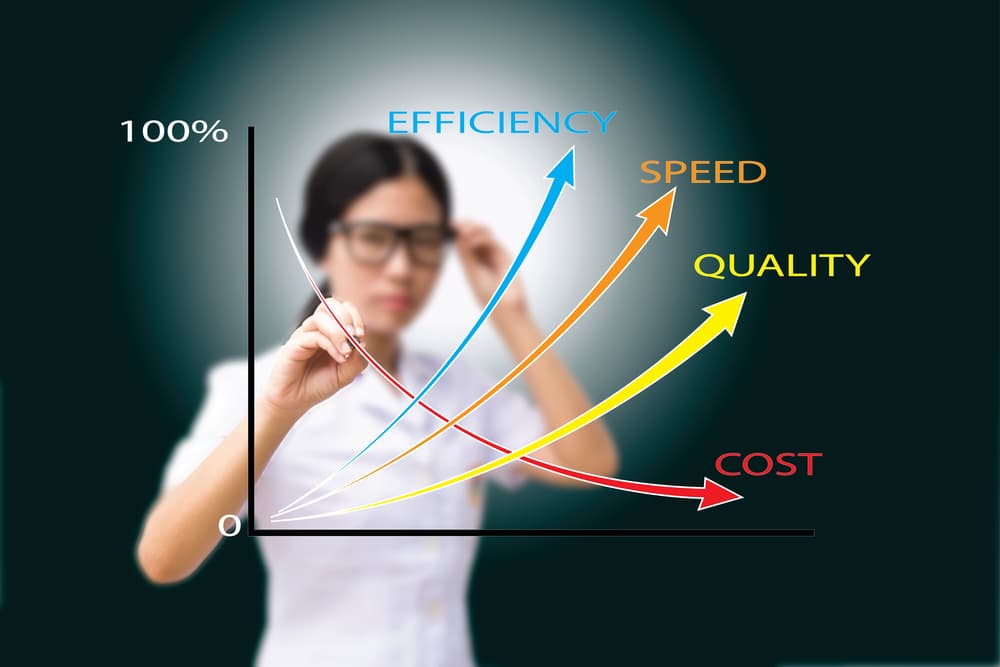Procure-to-pay increases efficiency by integrating your purchasing and accounts payable systems. Find out how P2P can revolutionize your business.
It can take a week or more in many organizations to approve a simple purchase requisition. If every step in the purchasing process stretched out this long, it would take months to get anything done. That isn’t an option for most companies.
That’s why smart businesses use automated procure-to-pay processes to streamline their workflow. Learn more about P2P to discover how you can use it to overcome common business challenges.
What is procure-to-pay?
Procure-to-pay, or P2P, is a process encompassing all the steps involved in purchasing goods and services at affordable prices within a reasonable amount of time. After all, your employees can't wait two months to get new pens and ink cartridges. Depending on the size of your company, some of the steps in the P2P process may take place a few times per week or several times each day.
It's important to distinguish source-to-pay versus procure-to-pay. P2P is a detailed process connecting the purchasing and accounts payable departments when a company buys goods and services. Source-to-pay is a more robust procedure that incorporates finding suitable suppliers for your company.
Why is procure-to-pay important?
A consistent P2P process helps you understand how your business is spending money. Effective and efficient procure-to-pay also reduces the risk of fraud. Every employee must follow the steps in your P2P process before they work with new vendors or spend money on goods and services. In addition, it formalizes the invoicing review process, reducing the likelihood that your company will pay fraudulent invoices.
6 procure-to-pay process steps
The P2P process varies between companies, but it typically includes these six basic steps:
1. Identify your needs
The procure-to-pay process flow begins with identifying your needs. For example, a manufacturing company may need a new machine to replace one that keeps breaking down. During this step, team members work together to define the company's requirements. Specifications ("specs") for a machine may include its production rate or power draw.
2. Create a requisition
The next step is to create and submit a purchase requisition — a formal request to purchase something. Requisitioning typically requires the following information:
- Name of the person making the request
- Description of the requested products or services
- Number of items requested
- Price per item
- Total purchase amount
- Reason for the request
Procurement officers review these requests and determine whether to approve or deny them.
3. Submit a purchase order
Once a requisition is approved, the next step is to complete a purchase order — a document sent to a supplier outlining the products needed and their agreed prices. Purchase orders ensure transparency between a company and its vendor by spelling out exactly what the buyer expects to receive. You can refer to the purchase order for verification if you’re ever uncertain whether you ordered 100 or 1,000 widgets.
4. Receive the goods or services
Once you submit a purchase order, the vendor fulfills it, delivering the requested goods or providing the services you ordered. When you receive goods, there should be a receipt listing the contents of each package. This is the time to inspect the merchandise and ensure nothing is missing or damaged. If you notice a problem, immediately contact the vendor to request a replacement.
5. Approve the invoice
After you receive your goods or services, the accounts payable department must check for discrepancies between the purchase order, the goods receipt, and the vendor's invoice — a process known as three-way matching. If everything looks good, they should approve the invoice.
6. Pay the vendor
The last step in the procure-to-pay process flow is to pay the vendor. Your accounting department will make the payment according to agreed-upon terms. For example, if the vendor lets you pay in installments, your accounts payable team should send the payments as scheduled.
Benefits of the P2P process

An efficient procure-to-pay process has many benefits, whether you're heading a one-person company or managing finances for a large corporation. Here's how your company can benefit from streamlining your current P2P process.
Fraud protection
As mentioned earlier, an efficient P2P process reduces the risk of fraud. For example, without checks and balances in your procurement system, it's easy for employees to award contracts to family members or try to circumvent the bidding process in some way. A less-organized system may also lead to your company paying fraudulent invoices. A good P2P process has multiple layers of approval, ensuring you get the right products at the right prices.
Improved relationships
With inefficient P2P processes, approving invoices and paying vendors takes a long time. Suppliers rely on timely payments to keep their businesses running, so they prefer to work with customers who promptly process invoices and pay quickly. If you improve your procure-to-pay process, you can also improve your relationships with suppliers, helping your company qualify for better payment terms or other perks.
Lower costs
An efficient P2P process makes it easier to build a network of preferred suppliers, many of whom may be willing to offer attractive discounts on their goods and services. Using automation tools also reduces the costs associated with inefficient manual processes.
Increased efficiency
Companies that don't pay much attention to the P2P process often use inefficient procurement procedures. They may have one person deal with requisitions, another person fill out purchase orders, and a third person approve invoices. If these people work independently, they may not realize that there's a problem. A good P2P process centralizes procurement functions, increasing productivity and minimizing waste.
Enhanced transparency
An efficient procure-to-pay process makes it easy to monitor your company's spending. Without it, you may end up with duplicate orders or overpay for supplies you frequently use. A streamlined P2P process makes it much easier to track invoicing, bills of exchange, and transactions, allowing for intelligent budgeting.
Increased agility
The COVID-19 pandemic taught business owners that they need to be ready to pivot at a moment's notice. Supply chain disruptions put many essential goods on backorder, making it difficult for companies to continue normal operations. An efficient P2P process makes responding to changing market conditions easier, protecting your company against supply chain disruptions.
Challenges of the P2P process

The P2P process comes with a few challenges, but it's possible to overcome them with careful planning. Here are the challenges you need to know about before you embark on an overhaul of your P2P system.
- Reworks: If someone makes a mistake during one of the steps in the P2P process, they have to redo their work. This wastes time and may sour relationships with suppliers.
- Costs: Manual processes use extra resources, making them costly, but automation helps reduce the costs associated with procurement.
- Lost discounts: Many suppliers offer discounts for early payments. If you miss a payment deadline, you may lose out on a discount, increasing your overall costs.
- Market changes: Inefficient P2P processes make it more difficult to respond to price fluctuations and other market changes. As a result, you may end up paying more for the goods and services you use the most.
4 smart practices
If you're ready to streamline your P2P process and take advantage of automation opportunities, here are four helpful tips to get you started.
- Use procure-to-pay software. When you do things manually, there are more opportunities for employees to make mistakes. Technology, such as UPC codes and P2P software, speeds up procurement activities and increases accuracy, a winning combination.
- Get input from your suppliers. Before revamping your P2P process, ask your suppliers about any pain points they've noticed. Incorporate this feedback into your new system to increase supplier satisfaction.
- Be as transparent as possible. No one should ever have to guess what's going on or why they have to do things a certain way. Provide as much information as possible so stakeholders can use the new P2P system effectively.
- Update your contract management process. Redundancy wastes time, so review your current strategy and look for opportunities to eliminate or automate unnecessary steps.
Digitize and automate your payments with EDI and Orderful
Strategically organizing your procure-to-pay process is a great way to reduce costs, enhance business outcomes, and streamline accounting operations. Automating the process with the aid of electronic data interchange (EDI) enables the seamless flow of information, making it a vital technology for businesses. EDI also promotes efficiency and standardization.
Contact Orderful today to speak with an expert about using EDI to streamline your P2P activities.
